Economic and Technical Analysis of a Hybrid Dry Cooling Cycle to Replace Conventional Wet Cooling Towers for High Process Cooling Loads
Abstract
1. Introduction
2. Materials and Methods
2.1. Heat Exchanger Design/Simulation
2.2. Process Simulation
3. Results and Discussion
3.1. Existing Tubular Heat Exchangers
3.2. Wet Cooling Tower
3.3. Alternative Cooling Cycle
3.4. Model Convergence
3.5. Design of Heat Exchangers for the Proposed Cycle
3.6. Economic Comparison
4. Conclusions
Author Contributions
Funding
Data Availability Statement
Conflicts of Interest
Nomenclature
| Abbreviations | Description |
| CoP | Coefficient of performance; ratio of heat absorbed to work consumed |
| CP | Constant-pressure heat capacity (J·kg−1·K−1) |
| di | Tube inside diameter (m) |
| do | Tube outside diameter (m) |
| Ft | Temperature gradient correction factor due to flow arrangement |
| hi | Inside convective heat transfer coefficient (W·m−2·K−1) |
| hid | Inside dirt (fouling) convective heat transfer coefficient (W·m−2·K−1) |
| ho | Outside convective heat transfer coefficient (W·m−2·K−1) |
| hod | Outside dirt (fouling) convective heat transfer coefficient (W·m−2·K−1) |
| HVAC | Heating, ventilation and air conditioning |
| IAPWS | International Association for the Properties of Water and Steam |
| kw | Thermal conductivity for the material of the tubes (W·m−1·K−1) |
| m | Mass flow (kg·h−1) |
| P | Pressure (Pa) |
| Psat | Saturation vapor pressure of liquid (Pa) |
| Q | Heat huty (J·h−1) |
| T | Temperature (K) |
| TEMA | Tubular Exchanger Manufacturing Association |
| U | Overall heat transfer coefficient (W·m−2·K) |
| ΔTLM | Log-mean temperature difference (LMTD) |
| xi | Liquid mole fraction |
| yi | Vapor mole fraction |
| λ | Heat absorbed or liberated due to phase change (J·kg−1) |
| φl | Fugacity of liquid |
| φv | Fugacity of vapor |
References
- Ge, W.; Zhao, Y.; Song, S.; Li, W.; Gao, S.; Chen, T. Thermal characteristics of dry cooling tower reconstructed from obsolete natural draft wet cooling tower and the relevant thermal system coupling optimization. Appl. Therm. Eng. 2020, 174, 115202. [Google Scholar] [CrossRef]
- Hasan, A.; Vuolle, M.; Sirén, K.; Holopainen, R.; Tuomaala, P. A cooling tower combined with chilled ceiling: System optimisation. Int. J. Low-Carbon Technol. 2007, 2, 217–224. [Google Scholar] [CrossRef]
- Asvapoositkul, W.; Kuansathan, M. Comparative evaluation of hybrid (dry/wet) cooling tower performance. Appl. Therm. Eng. 2014, 71, 83–93. [Google Scholar] [CrossRef]
- Wagner, M.J.; Kutscher, C. The impact of hybrid WET/DRY cooling on concentrating solar power plant performance. In Proceedings of the ASME 2010 4th International Conference on Energy Sustainability, ES 2010, Phoenix, AZ, USA, 17–22 May 2010; pp. 675–682. [Google Scholar] [CrossRef]
- Dehaghani, S.T.; Ahmadikia, H. Retrofit of a wet cooling tower in order to reduce water and fan power consumption using a wet/dry approach. Appl. Therm. Eng. 2017, 125, 1002–1014. [Google Scholar] [CrossRef]
- Nourani, Z.; Naserbegi, A.; Tayyebi, S.; Aghaie, M. Thermodynamic evaluation of hybrid cooling towers based on ambient temperature. Therm. Sci. Eng. Prog. 2019, 14, 100406. [Google Scholar] [CrossRef]
- Golkar, B.; Naserabad, S.N.; Soleimany, F.; Dodange, M.; Ghasemi, A.; Mokhtari, H.; Oroojie, P. Determination of optimum hybrid cooling wet/dry parameters and control system in off design condition: Case study. Appl. Therm. Eng. 2018, 149, 132–150. [Google Scholar] [CrossRef]
- Hu, H.; Li, Z.; Jiang, Y.; Du, X. Thermodynamic characteristics of thermal power plant with hybrid (dry/wet) cooling system. Energy 2018, 147, 729–741. [Google Scholar] [CrossRef]
- Lindahl, P.A., Jr.; Jameson, R.W. Plume Abatement and Water Conservation with the Wet/Dry Cooling Tower; Electric Power Research Institute: Palo Alto, CA, USA, 1995. [Google Scholar]
- Wei, H.; Chen, L.; Huang, X.; Ge, Z.; Yang, L.; Du, X. Performance of a novel natural draft hybrid cooling system with serial airside heat exchange. Appl. Therm. Eng. 2018, 147, 361–370. [Google Scholar] [CrossRef]
- Kong, Y.; Wang, W.; Huang, X.; Yang, L.; Du, X.; Yang, Y. Direct dry cooling system through hybrid ventilation for improving cooling efficiency in power plants. Appl. Therm. Eng. 2017, 119, 254–268. [Google Scholar] [CrossRef]
- Deziani, M.; Rahmani, K.; Roudaki, S.M.; Kordloo, M. Feasibility study for reduce water evaporative loss in a power plant cooling tower by using air to Air heat exchanger with auxiliary Fan. Desalination 2017, 406, 119–124. [Google Scholar] [CrossRef]
- Rezaei, E.; Shafiei, S.; Abdollahnezhad, A. Reducing water consumption of an industrial plant cooling unit using hybrid cooling tower. Energy Convers. Manag. 2010, 51, 311–319. [Google Scholar] [CrossRef]
- Sun, Y.; Duniam, S.; Guan, Z.; Gurgenci, H.; Dong, P.; Wang, J.; Hooman, K. Coupling supercritical carbon dioxide Brayton cycle with spray-assisted dry cooling technology for concentrated solar power. Appl. Energy 2019, 251, 113328. [Google Scholar] [CrossRef]
- Zhang, Z.; Gao, M.; Dang, Z.; He, S.; Sun, F. An exploratory research on performance improvement of super-large natural draft wet cooling tower based on the reconstructed dry-wet hybrid rain zone. Int. J. Heat Mass Transf. 2019, 142, 118465. [Google Scholar] [CrossRef]
- Huang, Y.; Chen, L.; Huang, X.; Du, X.; Yang, L. Performance of natural draft hybrid cooling system of large scale steam turbine generator unit. Appl. Therm. Eng. 2017, 122, 227–244. [Google Scholar] [CrossRef]
- Njoku, I.H.; Diemuodeke, O.E. Techno-economic comparison of wet and dry cooling systems for combined cycle power plants in different climatic zones. Energy Convers. Manag. 2020, 227, 113610. [Google Scholar] [CrossRef]
- Butler, C.; Grimes, R. The effect of wind on the optimal design and performance of a modular air-cooled condenser for a concentrated solar power plant. Energy 2014, 68, 886–895. [Google Scholar] [CrossRef]
- Conradie, A.; Kröger, D. Performance evaluation of dry-cooling systems for power plant applications. Appl. Therm. Eng. 1996, 16, 219–232. [Google Scholar] [CrossRef]
- Arie, M.A.; Shooshtari, A.H.; Ohadi, M.M. Experimental characterization of an additively manufactured heat exchanger for dry cooling of power plants. Appl. Therm. Eng. 2018, 129, 187–198. [Google Scholar] [CrossRef]
- Li, X.; Duniam, S.; Gurgenci, H.; Guan, Z.; Veeraragavan, A. Full scale experimental study of a small natural draft dry cooling tower for concentrating solar thermal power plant. Appl. Energy 2017, 193, 15–27. [Google Scholar] [CrossRef]
- Javadi, M.A.; Khodabakhshi, S.; Ghasemiasl, R.; Jabery, R. Sensivity analysis of a multi-generation system based on a gas/hydrogen-fueled gas turbine for producing hydrogen, electricity and freshwater. Energy Convers. Manag. 2021, 252, 115085. [Google Scholar] [CrossRef]
- Ehsan, M.M.; Guan, Z.; Gurgenci, H.; Klimenko, A. Feasibility of dry cooling in supercritical CO2 power cycle in concentrated solar power application: Review and a case study. Renew. Sustain. Energy Rev. 2020, 132, 110055. [Google Scholar] [CrossRef]
- Hooman, K.; Guan, Z.; Gurgenci, H. Advances in dry cooling for concentrating solar thermal (CST) power plants. In Advances in Concentrating Solar Thermal Research and Technology; Elsevier Inc.: Amsterdam, The Netherlands, 2017; pp. 179–212. [Google Scholar] [CrossRef]
- Daou, K.; Wang, R.; Xia, Z. Desiccant cooling air conditioning: A review. Renew. Sustain. Energy Rev. 2006, 10, 55–77. [Google Scholar] [CrossRef]
- Sun, J.; Fu, L.; Zhang, S. A review of working fluids of absorption cycles. Renew. Sustain. Energy Rev. 2012, 16, 1899–1906. [Google Scholar] [CrossRef]
- TEMA. Standards of Tubular Exchanger Manufacturers Association, 6th ed.; TEMA Inc.: New York, NY, USA, 1978. [Google Scholar]
- Kern, D.Q. Process Heat Transfer; Tata McGraw-Hill Education: New York, NY, USA, 1997. [Google Scholar]
- Taborek, J. Heat Exchanger Design Handbook; Hemisphere: New York, NY, USA, 1983. [Google Scholar]
- Towler, G.; Sinnott, R. Chemical Engineering Design: Principles, Practice and Economics of Plant and Process Design, 6th ed.; Butterworth-Heinemann: Oxford, UK, 2021. [Google Scholar]
- Wagner, W.; Pruß, A. The IAPWS Formulation 1995 for the thermodynamic properties of ordinary water substance for general and scientific use. J. Phys. Chem. Ref. Data 2002, 31, 387–535. [Google Scholar] [CrossRef]
- Seong, G.; Yoo, K.-P.; Lim, J.S. Vapor−liquid equilibria for propane (R290) + n-Butane (R600) at various temperatures. J. Chem. Eng. Data 2008, 53, 2783–2786. [Google Scholar] [CrossRef]
- Beránek, P.; Wichterle, I. Vapour—Liquid equilibria in the propane—n-butane system at high pressures. Fluid Phase Equilibria 1981, 6, 279–282. [Google Scholar] [CrossRef]
- Vejrosta, J.; Wichterle, I. The propane-pentane system at high pressures. Collect. Czechoslov. Chem. Commun. 1974, 39, 1246–1248. [Google Scholar] [CrossRef]
- Sage, B.H.; Lacey, W.N. Phase Equilibria in Hydrocarbon Systems Propane–n–Pentane System. Ind. Eng. Chem. 1940, 32, 992–996. [Google Scholar] [CrossRef]
- Kay, W.B.; Hoffman, R.L.; Davies, O. Vapor-Liquid Equilibrium Relations of Binary Systems n-Butane-n-Pentane and n-Butane-n-Hexane. J. Chem. Eng. Data 1975, 20, 333–338. [Google Scholar] [CrossRef]
- Bergman, T.L.; Incropera, F.P. Fundamentals of Heat and Mass Transfer; John Wiley & Sons: Hoboken, NJ, USA, 2011. [Google Scholar]
- Sinnott, R.; Towler, G. Chemical Engineering Design: SI Edition; Butterworth-Heinemann: Oxford, UK, 2019. [Google Scholar]
- World Weather Online. 14 Day Weather Forecast|World Weather Online. World Weather Online Website. 2018. Available online: https://www.worldweatheronline.com/ (accessed on 22 July 2021).
- Water. NIST. Available online: https://webbook.nist.gov/cgi/cbook.cgi?Name=water&Units=SI (accessed on 22 July 2021).
- Peters, M.S.; Timmerhaus, K.D.; West, R.E. Plant Design and Economics for Chemical Engineers; McGraw-Hill: New York, NY, USA, 2003; Volume 4. [Google Scholar]
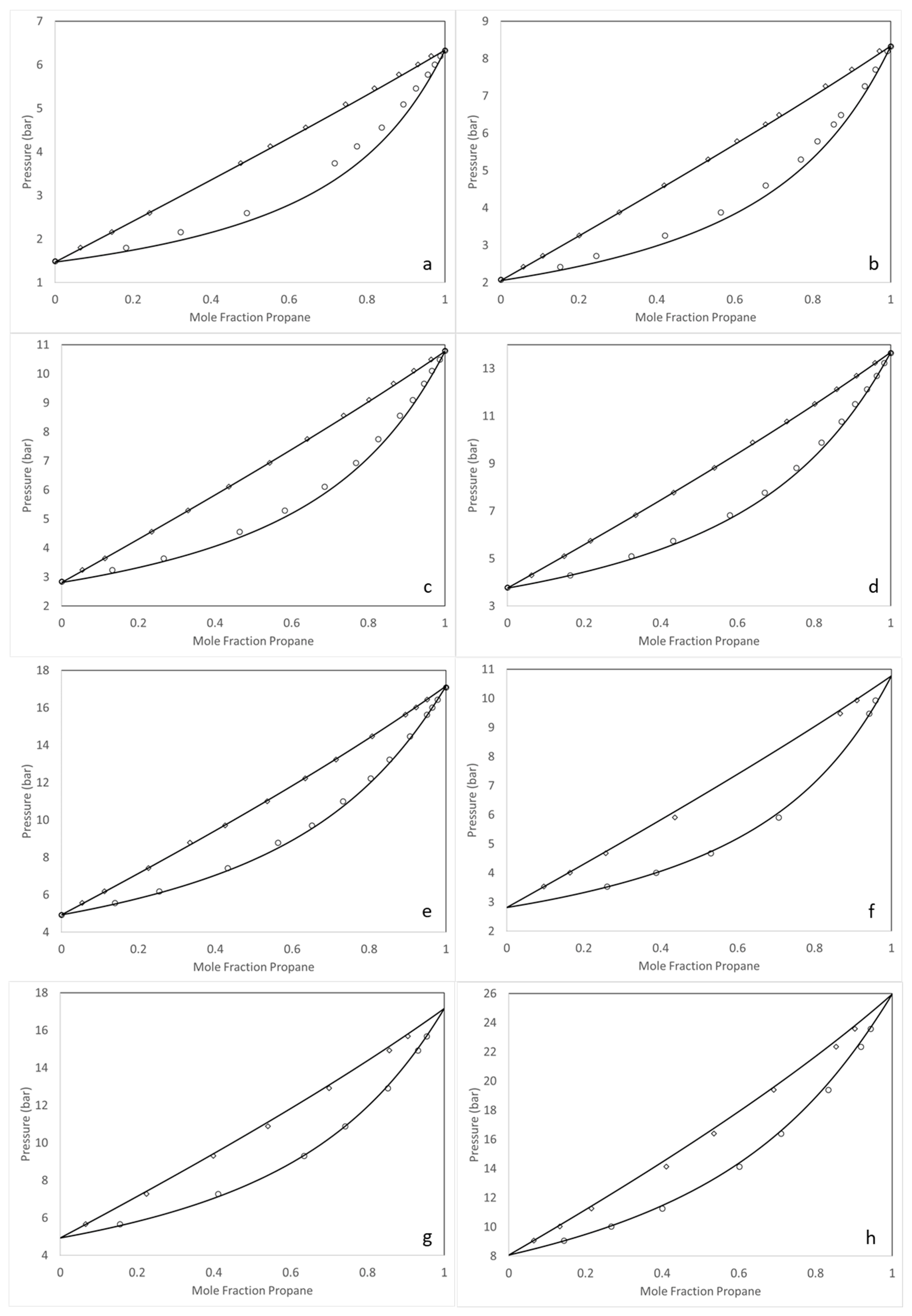
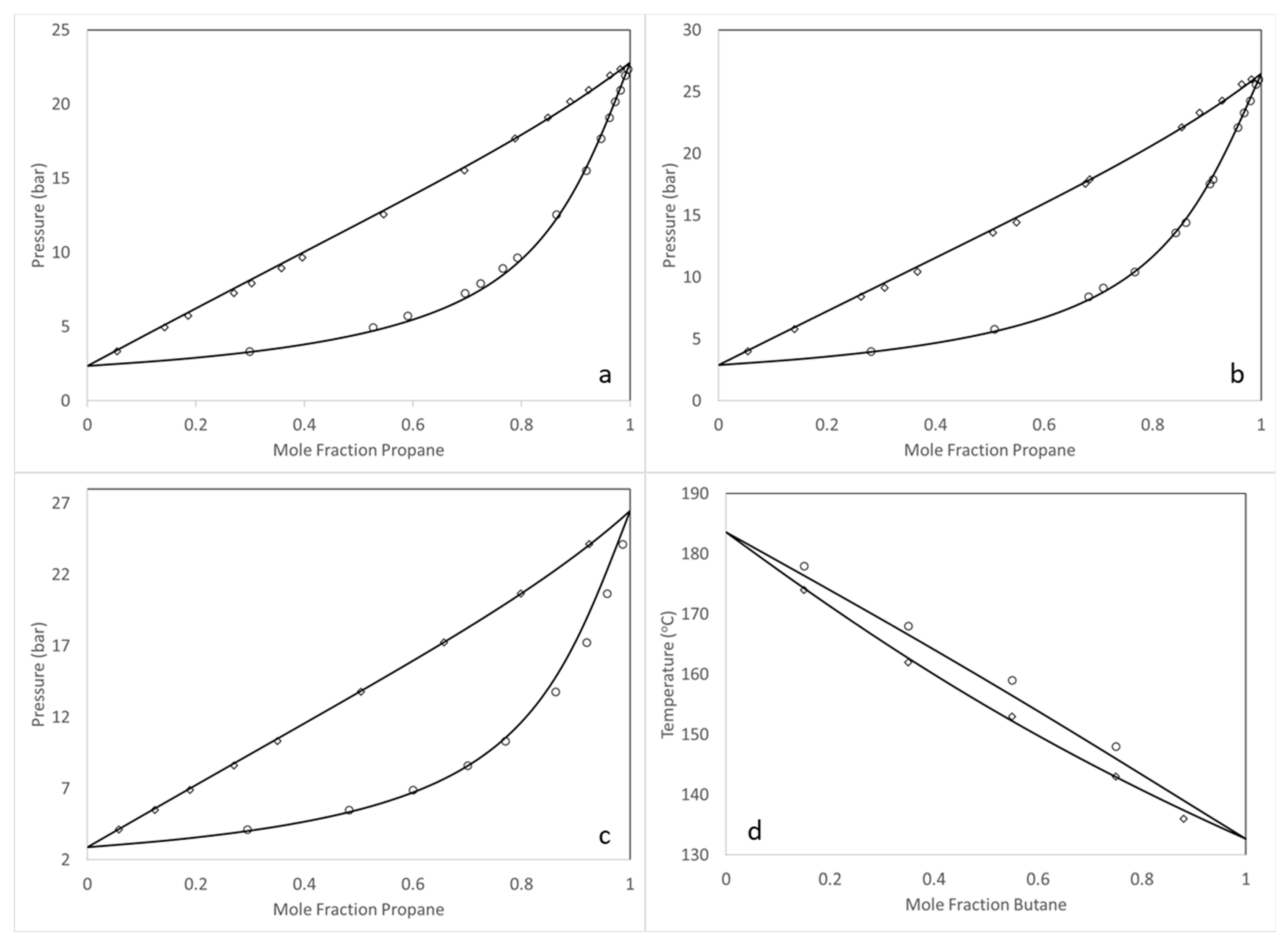
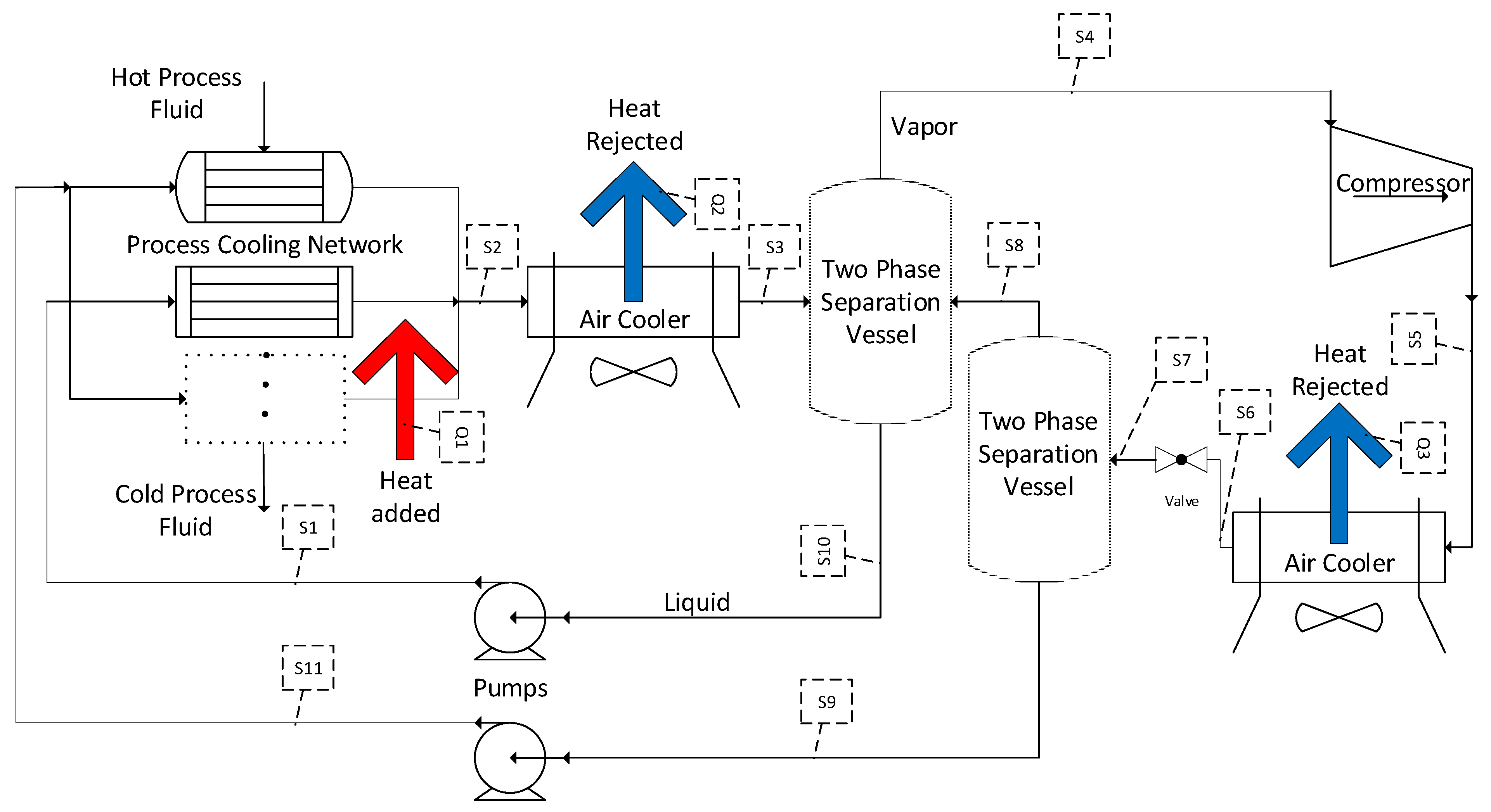
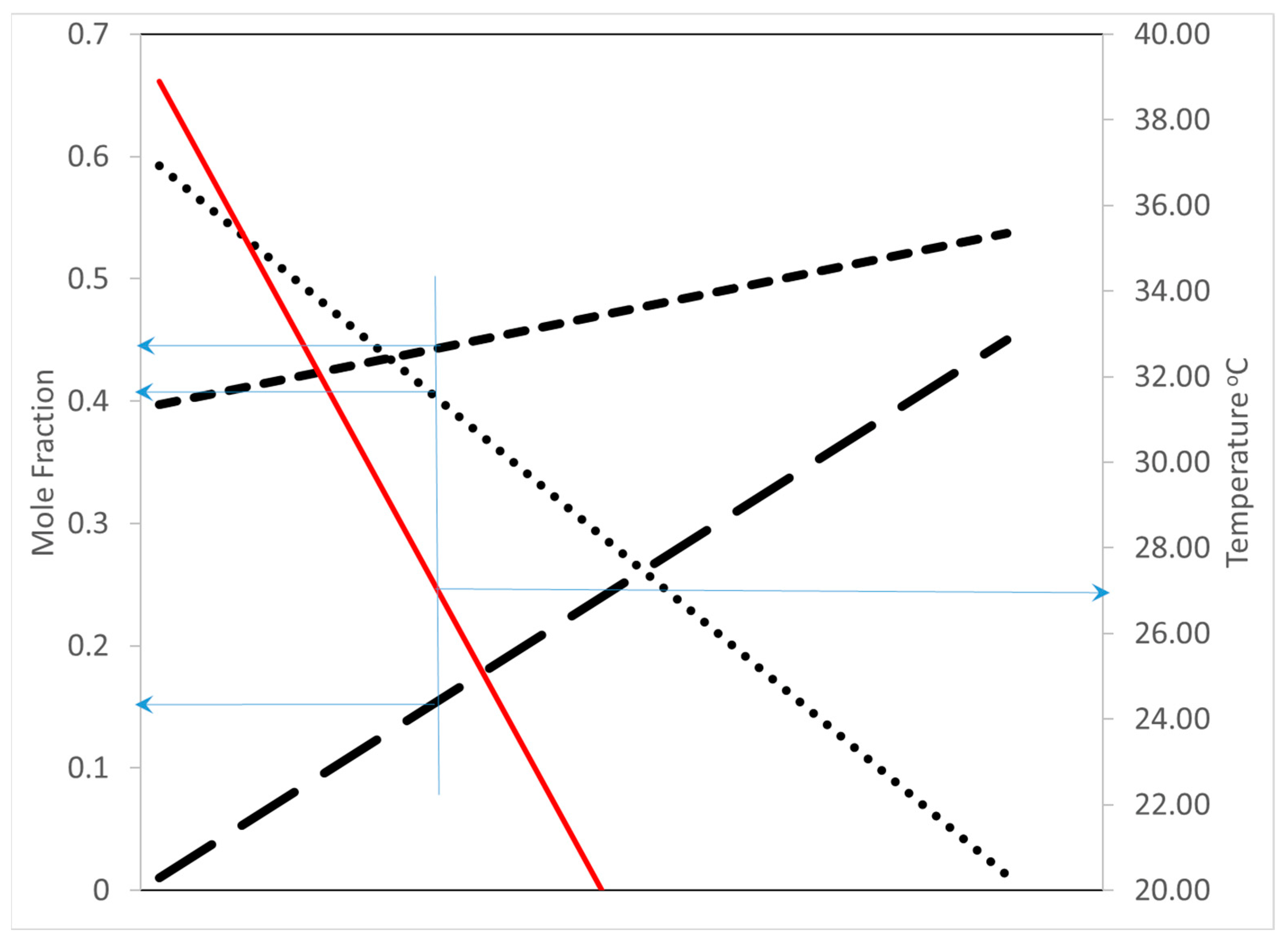
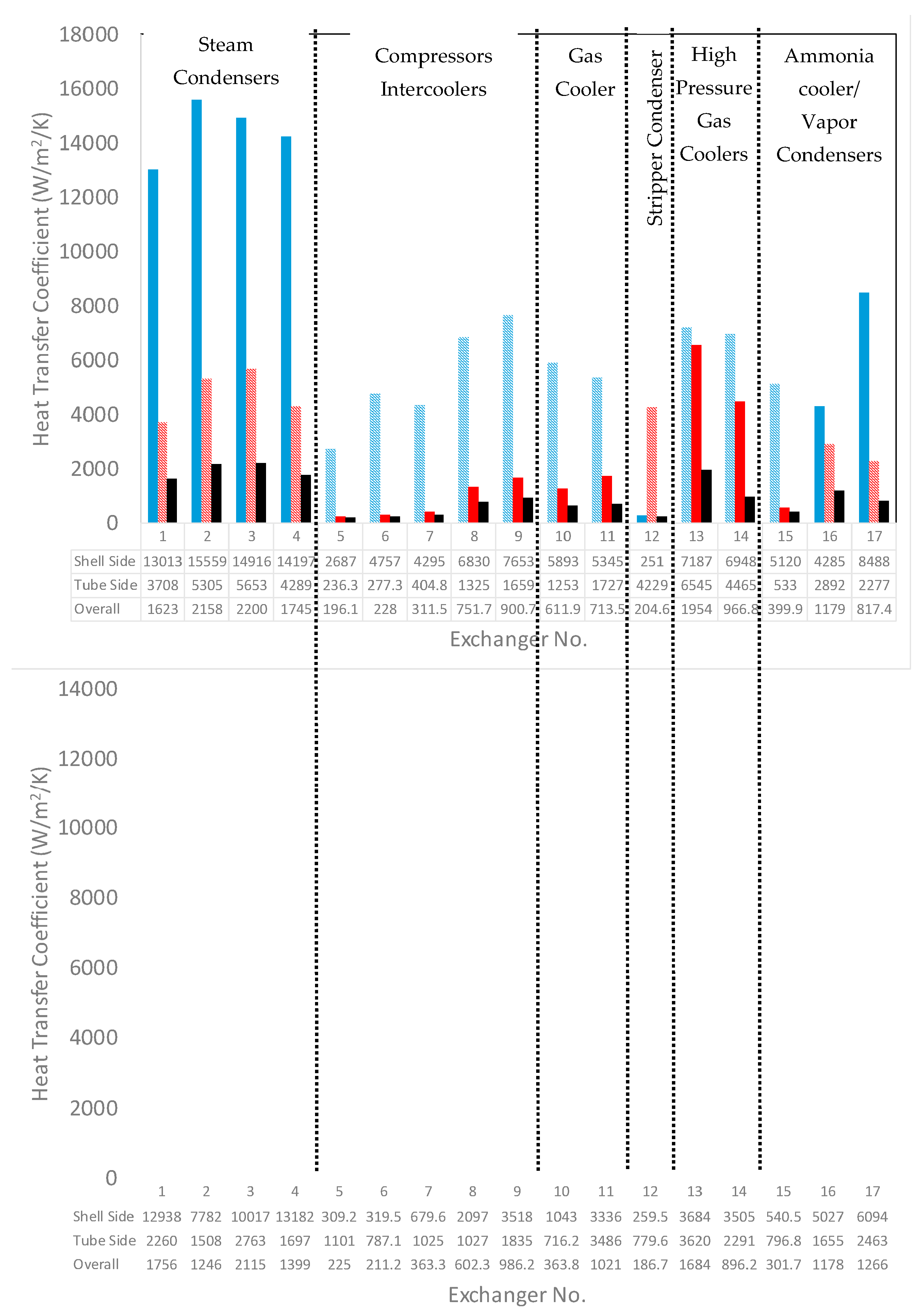


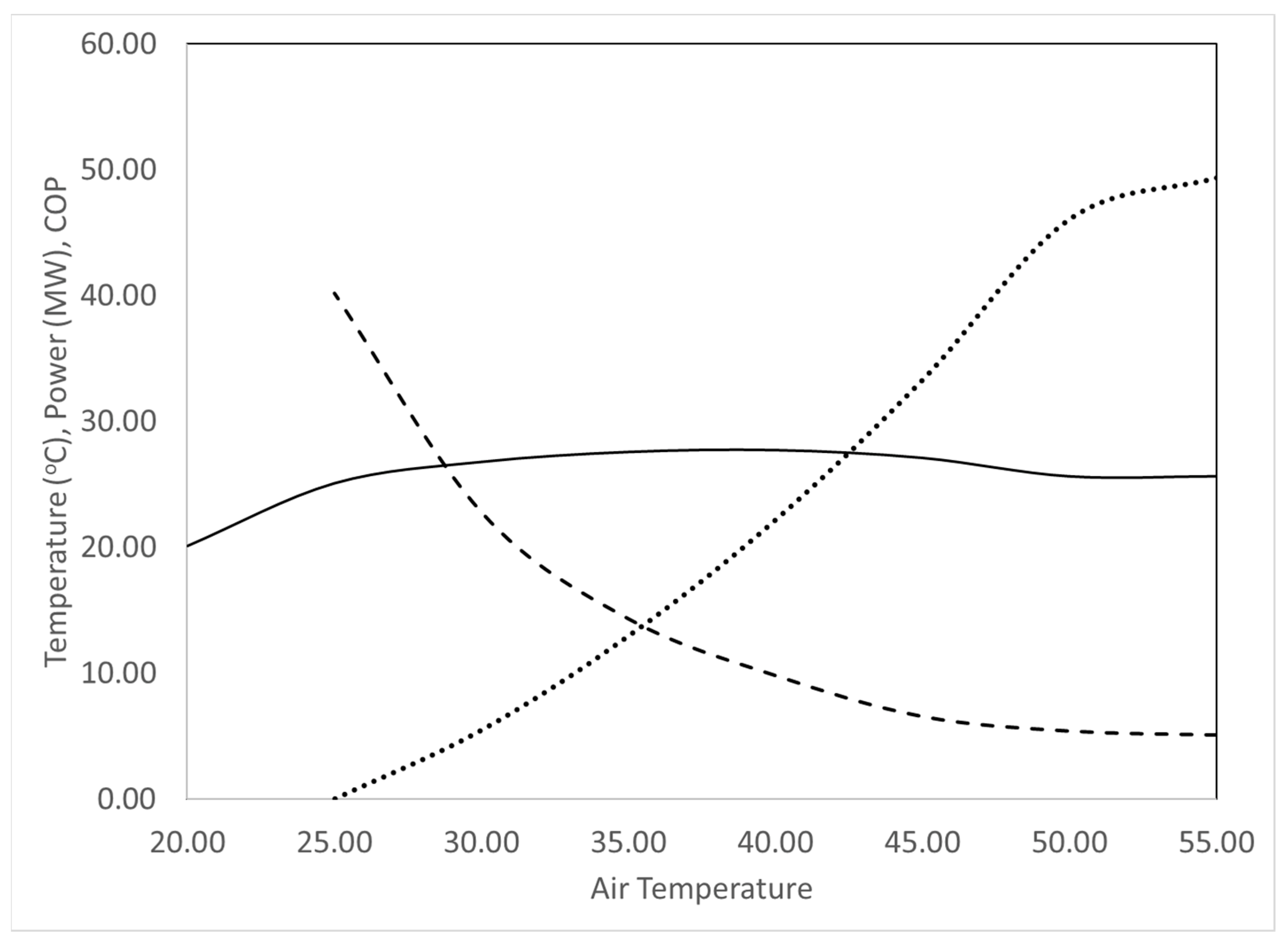
| No. | Units | Operation | TEMA Type | Heat Duty (kW) | Temperatures | Cost (USD) * | Cooling Load (%) | |||||
|---|---|---|---|---|---|---|---|---|---|---|---|---|
| P | S | Process | CW | |||||||||
| In | Out | In | Out | |||||||||
| 1 | 2 | 1 | Steam Turbines Condenser | AGM | 22,463.2 | 55 | 55 | 35 | 52 | 827,724 | 11.6 | 47.6 |
| 2 | 1 | 1 | 4074.2 | 30 | 52 | 93,537 | 2.1 | |||||
| 3 | 2 | 1 | 18,026.9 | 35 | 52 | 461,206 | 9.3 | |||||
| 4 | 4 | 1 | 47,954.3 | 29 | 49 | 901,304 | 24.7 | |||||
| 5 | 2 | 1 | Compressors Intercoolers | BEM | 2214.2 | 160 | 41 | 29 | 40 | 98,722 | 1.1 | 9.1 |
| 6 | 2 | 1 | 2213.8 | 74,492 | 1.1 | |||||||
| 7 | 2 | 1 | 2246.6 | 61,466 | 1.2 | |||||||
| 8 | 2 | 1 | CEP | 5522.6 | 130 | 35 | 29 | 43 | 104,162 | 2.8 | ||
| 9 | 2 | 1 | 5526 | 145,188 | 2.8 | |||||||
| 10 | 1 | 1 | Natural Gas pre-cooler | BEU | 584.4 | 74 | 38 | 29 | 38 | 30,599 | 0.3 | 25 |
| 11 | 1 | 1 | Effluent Cooler | 2626.7 | 66 | 35 | 29 | 43 | 77,694 | 1.4 | ||
| 12 | 3 | 1 | Stripper Condenser | AHS | 40,867.2 | 102 | 38 | 29 | 49 | 1,498,950 | 21.0 | |
| 13 | 1 | 1 | Effluent Cooler | DEU | 2201.5 | 54 | 39 | 29 | 34 | 71,080 | 1.1 | |
| 14 | 2 | 1 | Feed Cooler | 2313 | 47 | 32 | 24 | 29 | 538,194 | 1.2 | ||
| 15 | 1 | 1 | Ammonia Cooler/Condenser | CEP | 1825 | 101 | 35 | 29 | 41 | 45,151 | 0.9 | 18.2 |
| 16 | 4 | 2 | AES | 32,188.4 | 37 | 30 | 29 | 35 | 3,225,432 | 16.6 | ||
| 17 | 2 | 1 | 1338.6 | 49 | 49 | 29 | 43 | 74,656 | 0.7 | |||
| Total cooling water capacity = 303.5 m3/min | ||
| Total cooling load = 215 MW | Evaporation rate = 5.86 m3/min | |
| Evaporative cooling = 164.5 MW (76.5%) | Direct cooling = 50.5 MW (23.5%) | Drift loss = 0.05 m3/min |
| Blowdown = 0.76 m3/min | ||
| Total air flow = 205.8 m3/min | Total water losses = 6.7 m3/min | |
| No. | Equipment and Land Cost | Cost (Million USD) |
|---|---|---|
| 1. | Shell and tube heat exchangers | 8.33 |
| 2. | Cooling tower | 2.50 |
| 3. | Cooling water pumps | 1.23 |
| 4. | Tube well pumps and installation | 1.78 |
| 5. | Pipe line for makeup ground water (12 km) | 5.0 |
| 5. | Clarifier plus filtration | 0.32 |
| 6. | Mixing and dosing units for flocculants and coagulants | 0.08 |
| 7. | Land acquisition for ground water extraction | 1.13 |
| Total | 20.37 |
| Stream | Temperature (°C) | Pressure (bar) | Molar Flow (kgmole/h) | Molar Percentage (%) | Quality | ||
|---|---|---|---|---|---|---|---|
| Propane | Butane | Pentane | Vapor | ||||
| S1 | 42.1 | 4 | 8477 | 5.30 | 29.32 | 65.38 | 0 |
| Q1 | 215 MW (designed process cooling load) | ||||||
| S2 | 51.9 | 3 | 31,200 | 15.00 | 41.00 | 44.00 | 100 |
| Q2 | 60.8 MW (air cooler I load) | ||||||
| S3 | 45 | 2.8 | 31,200 | 15.00 | 41.00 | 44.00 | 72.85 |
| S4 | 42 | 2.8 | 27,930 | 25.30 | 43.70 | 31.00 | 100 |
| 24.9 MW (compressor duty with 75% adiabatic efficiency) | |||||||
| S5 | 78.4 | 7.5 | 27,930 | 25.30 | 43.70 | 31.00 | 100 |
| Q3 | 179.2 MW (air cooler II load) | ||||||
| S6 | 45 | 7.3 | 27,930 | 25.30 | 43.70 | 31.00 | 100 |
| S7 | 21 | 2.8 | 27,930 | 25.30 | 43.70 | 31.00 | 18.63 |
| S8 | 21 | 2.8 | 5240 | 54.51 | 36.44 | 9.05 | 100 |
| S9 | 21 | 2.8 | 22,720 | 18.61 | 45.36 | 36.03 | 0 |
| S10 | 42 | 2.8 | 8480 | 5.30 | 29.32 | 65.38 | 0 |
| S11 | 21.1 | 4 | 22,720 | 18.61 | 45.36 | 36.03 | 0 |
| S11 + S1 | 27 | 4 | 31,200 | 15 | 41 | 44 | 0 |
| 147 kW (pump duty with 75% adiabatic efficiency) | |||||||
| Heat balance = 215 + 24.9 + 0.147 − 60.8 − 179.2 ≈ 0 | |||||||
| No. | Units | Operation | TEMA Type | Heat Duty (kW) | Temperatures | Cost (USD) | Cooling Load (%) | |||||
|---|---|---|---|---|---|---|---|---|---|---|---|---|
| P | S | Process | CW | |||||||||
| In | Out | In | Out | |||||||||
| 1 | 2 | 1 | Steam Turbines Condenser | AGU | 22,463.2 | 55 | 55 | 35 | 52 | 790,948 | 11.6 | 47.6 |
| 2 | 1 | 1 | 4074.2 | 27 | 52 | 140,758 | 2.1 | |||||
| 3 | 2 | 1 | 18,026.9 | 35 | 52 | 431,860 | 9.3 | |||||
| 4 | 4 | 1 | 47,954.3 | 27 | 52 | 835,376 | 24.7 | |||||
| 5 | 2 | 1 | Compressors Intercoolers | BGU | 2214.2 | 160 | 41 | 27 | 52 | 110,372 | 1.1 | 9.1 |
| 6 | 2 | 1 | 2213.8 | 132,194 | 1.1 | |||||||
| 7 | 2 | 1 | 2246.6 | 77,292 | 1.2 | |||||||
| 8 | 2 | 1 | CGU | 5522.6 | 130 | 35 | 27 | 52 | 141,374 | 2.8 | ||
| 9 | 2 | 1 | 5526 | 117,352 | 2.8 | |||||||
| 10 | 1 | 1 | N. Gas Pre-cooler | BGU | 584.4 | 74 | 38 | 27 | 52 | 52,274 | 0.3 | 25 |
| 11 | 1 | 1 | Effluent Cooler | BEU | 2626.7 | 66 | 35 | 27 | 34 | 56,947 | 1.4 | |
| 12 | 3 | 1 | Stripper Condenser | AHU | 40,867.2 | 102 | 38 | 27 | 52 | 2,007,087 | 21.0 | |
| 13 | 1 | 1 | Effluent Cooler | BEU | 2201.5 | 54 | 39 | 27 | 34 | 97,760 | 1.1 | |
| 14 | 2 | 1 | Feed Cooler | 2313 | 47 | 32 | 27 | 34 | 425,442 | 1.2 | ||
| 15 | 1 | 1 | Ammonia Cooler/Condenser | BHU | 1825 | 101 | 35 | 27 | 52 | 105,264 | 0.9 | 18.2 |
| 16 | 4 | 2 | AEU | 32,188.4 | 37 | 30 | 27 | 34 | 3,720,560 | 16.6 | ||
| 17 | 2 | 1 | 1338.6 | 49 | 49 | 45,170 | 0.7 | |||||
| Original Cycle | Proposed Cycle | |
|---|---|---|
| Direct cost | (million USD) | |
| Purchased and delivered equipment cost | 20.37 | 62.41 |
| Equipment installation | 9.57 | 29.33 |
| Instrumentation and controls | 7.33 | 22.47 |
| Piping | 13.85 | 42.44 |
| Electrical system | 2.24 | 6.87 |
| Buildings | 3.67 | 11.23 |
| Yard improvement | 2.04 | 6.24 |
| Service facilities | 14.26 | 43.69 |
| Total direct cost | 73.33 | 224.68 |
| Indirect cost | ||
| Engineering and supervision | 6.72 | 20.60 |
| Construction expenses | 8.35 | 25.59 |
| Legal expenses | 0.81 | 2.50 |
| Contractor’s fee | 4.48 | 13.73 |
| Contingency | 8.96 | 27.46 |
| Total indirect cost | 29.33 | 89.87 |
| Fixed capital investment | 102.66 | 314.55 |
| Working capital | 20.53 | 62.91 |
| Total capital investment | 123.20 | 377.46 |
Publisher’s Note: MDPI stays neutral with regard to jurisdictional claims in published maps and institutional affiliations. |
© 2022 by the authors. Licensee MDPI, Basel, Switzerland. This article is an open access article distributed under the terms and conditions of the Creative Commons Attribution (CC BY) license (https://creativecommons.org/licenses/by/4.0/).
Share and Cite
Taimoor, A.A.; Saeed, U.; Rather, S.-u.; Al-Shahrani, S.; Bamufleh, H.S.; Alhumade, H.; Sulaimon, A.A.; Alalayah, W.M.; Shariff, A.M. Economic and Technical Analysis of a Hybrid Dry Cooling Cycle to Replace Conventional Wet Cooling Towers for High Process Cooling Loads. Energies 2022, 15, 7986. https://doi.org/10.3390/en15217986
Taimoor AA, Saeed U, Rather S-u, Al-Shahrani S, Bamufleh HS, Alhumade H, Sulaimon AA, Alalayah WM, Shariff AM. Economic and Technical Analysis of a Hybrid Dry Cooling Cycle to Replace Conventional Wet Cooling Towers for High Process Cooling Loads. Energies. 2022; 15(21):7986. https://doi.org/10.3390/en15217986
Chicago/Turabian StyleTaimoor, Aqeel Ahmad, Usman Saeed, Sami-ullah Rather, Saad Al-Shahrani, Hisham S. Bamufleh, Hesham Alhumade, Aliyu Adebayo Sulaimon, Walid M. Alalayah, and Azmi Mohd Shariff. 2022. "Economic and Technical Analysis of a Hybrid Dry Cooling Cycle to Replace Conventional Wet Cooling Towers for High Process Cooling Loads" Energies 15, no. 21: 7986. https://doi.org/10.3390/en15217986
APA StyleTaimoor, A. A., Saeed, U., Rather, S.-u., Al-Shahrani, S., Bamufleh, H. S., Alhumade, H., Sulaimon, A. A., Alalayah, W. M., & Shariff, A. M. (2022). Economic and Technical Analysis of a Hybrid Dry Cooling Cycle to Replace Conventional Wet Cooling Towers for High Process Cooling Loads. Energies, 15(21), 7986. https://doi.org/10.3390/en15217986







